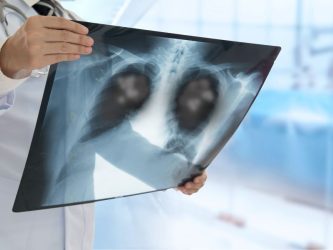Key Takeaways
- OCD involves a cycle of obsessions and compulsions. Obsessions are intrusive, unwanted thoughts, while compulsions are repetitive behaviors performed to reduce the anxiety they cause.
- Recognizing the signs is the first step to getting help. Common themes include contamination fears, a need for symmetry, and intrusive thoughts about harm or taboo subjects.
- Effective treatment is available. A combination of psychotherapy (like ERP) and medication can significantly improve quality of life for individuals with OCD.
Obsessive-Compulsive Disorder (OCD) is a widely misunderstood mental health condition. Often trivialized in popular culture as a quirk for cleanliness or organization, true OCD is a serious and often debilitating disorder that affects millions of adults. It traps individuals in a cycle of distressing, intrusive thoughts (obsessions) and repetitive, ritualistic behaviors (compulsions) aimed at easing the anxiety these thoughts create.
Understanding the true nature of OCD is the first step toward breaking this cycle and finding a path to recovery. At SOM Medical Practice, our compassionate mental health team is dedicated to providing the support and evidence-based treatment needed to manage OCD and reclaim your life.
This guide will walk you through the essential information about OCD in adults, from recognizing the signs and symptoms to understanding the most effective treatment options available.
1. What is Obsessive-Compulsive Disorder (OCD)?
OCD is a mental health disorder characterized by two core components: obsessions and compulsions. While most people experience occasional intrusive thoughts or repetitive habits, in OCD, these are severe enough to consume a significant amount of time (often more than an hour a day), cause major distress, and interfere with daily life, including work, school, and relationships.
- Obsessions are persistent, unwanted, and intrusive thoughts, images, or urges that trigger distressing feelings like anxiety, disgust, or fear. Individuals with OCD often recognize that these thoughts are a product of their own mind but struggle to control or suppress them.
- Compulsions (also known as rituals) are repetitive behaviors or mental acts that an individual feels driven to perform in response to an obsession. The goal of a compulsion is to prevent or reduce anxiety or to stop a dreaded event from happening. However, this relief is only temporary, and the failure to perform the ritual often leads to intense anxiety.
It is this vicious cycle—obsession leading to anxiety, which leads to a compulsion for temporary relief—that defines the disorder.
| Component | Definition | Common Examples |
| Obsessions | Unwanted, intrusive thoughts, images, or urges. | Fear of germs or contamination; Unwanted taboo thoughts (aggressive, sexual); Need for order and symmetry. |
| Compulsions | Repetitive behaviors or mental acts. | Excessive hand washing; Ordering and arranging things in a precise way; Repeatedly checking on things (e.g., that the door is locked). |
2. Recognizing the Common Signs and Symptoms of OCD
OCD symptoms can vary widely from person to person, but they generally fall into several common themes. Recognizing these themes can help identify whether you or a loved one may be struggling with the disorder.
According to the Mayo Clinic, common OCD themes include:
- Contamination and Washing:
- Obsession: Intense fear of germs, dirt, or contamination from touching objects others have touched.
- Compulsion: Excessive hand washing (to the point of raw skin), compulsive cleaning of one’s home, or avoiding crowds.
- Doubt, Harm, and Checking:
- Obsession: Pervasive fear of causing harm (e.g., hitting someone with a car) or being responsible for a terrible event (e.g., leaving the stove on and causing a fire).
- Compulsion: Repeatedly checking locks, appliances, or driving back to check for an accident.
- Symmetry, Ordering, and Counting:
- Obsession: An overwhelming need for things to be perfectly aligned, orderly, or symmetrical.
- Compulsion: Spending hours arranging objects, counting items, or repeating actions until it feels “just right.”
- Unwanted, Intrusive Thoughts (Pure O):
- Obsession: Distressing and often taboo thoughts related to aggression, sex, or religion that go against one’s personal values.
- Compulsion: Often involves mental rituals, such as silently praying, counting, or replacing a “bad” thought with a “good” one to neutralize the anxiety.
3. How is OCD Diagnosed?
A diagnosis of OCD is made by a qualified mental health professional, such as a psychiatrist or psychologist. The process typically involves a comprehensive psychological evaluation to discuss your thoughts, feelings, symptoms, and behavior patterns. To be diagnosed with OCD, a person must meet the criteria outlined in the Diagnostic and Statistical Manual of Mental Disorders (DSM-5).
The diagnostic process includes:
- Confirming the Presence of Obsessions, Compulsions, or Both: The clinician will explore the nature of your intrusive thoughts and repetitive behaviors.
- Evaluating Time Consumption and Impairment: The symptoms must be time-consuming (taking up more than one hour per day) or cause significant distress and impairment in social, occupational, or other important areas of functioning.
- Ruling Out Other Conditions: Symptoms are not attributable to the physiological effects of a substance (like a drug or medication) or another medical condition. The clinician will also differentiate OCD from other mental health disorders like generalized anxiety disorder, body dysmorphic disorder, or hoarding disorder.
4. Effective Treatment Options for OCD
OCD is a highly treatable condition. While it can be challenging, most people find significant relief with a combination of psychotherapy and medication. The goal of treatment is not necessarily to eliminate all symptoms but to provide the tools to manage them effectively so they no longer control your life.
- Psychotherapy: The most effective form of therapy for OCD is a type of Cognitive Behavioral Therapy (CBT) called Exposure and Response Prevention (ERP).
- Exposure: This involves gradually and repeatedly exposing you to the thoughts, images, objects, and situations that trigger your obsessions and anxiety.
- Response Prevention: During the exposure, you make a choice not to do the compulsive behavior. By staying in the situation without performing the ritual, you learn that your anxiety naturally decreases over time and your feared outcomes do not come true.
- Medication: Certain psychiatric medications can help control the obsessions and compulsions of OCD. The most commonly prescribed medications are antidepressants, specifically Selective Serotonin Reuptake Inhibitors (SSRIs).
| Treatment Type | Description | Examples |
| Psychotherapy | Exposure and Response Prevention (ERP) is the gold standard. | Gradually touching a doorknob without washing hands; Resisting the urge to check if the door is locked. |
| Medication | SSRIs are typically the first-line medication treatment. | Fluoxetine (Prozac), Sertraline (Zoloft), Paroxetine (Paxil). |
5. Finding Help and Taking the Next Step
Living with OCD can feel isolating, but you are not alone, and help is available. Taking the first step to seek a diagnosis and treatment is a courageous move toward regaining control of your life. A supportive and experienced healthcare team can make all the difference.
At SOM Medical Practice, our mental health professionals are experienced in diagnosing and treating OCD using evidence-based methods like ERP and medication management. We provide a compassionate, non-judgmental environment where you can feel safe to discuss your symptoms and work collaboratively on a personalized treatment plan.
If you believe you or a loved one may be struggling with OCD, don’t wait. Contact SOM Medical Practice today to schedule a confidential consultation and start your journey toward a healthier, more peaceful life.
References
[2] Mayo Clinic. "Obsessive-Compulsive Disorder (OCD) - Symptoms and Causes."
[3] Mayo Clinic. "Obsessive-Compulsive Disorder (OCD) - Diagnosis and Treatment."








